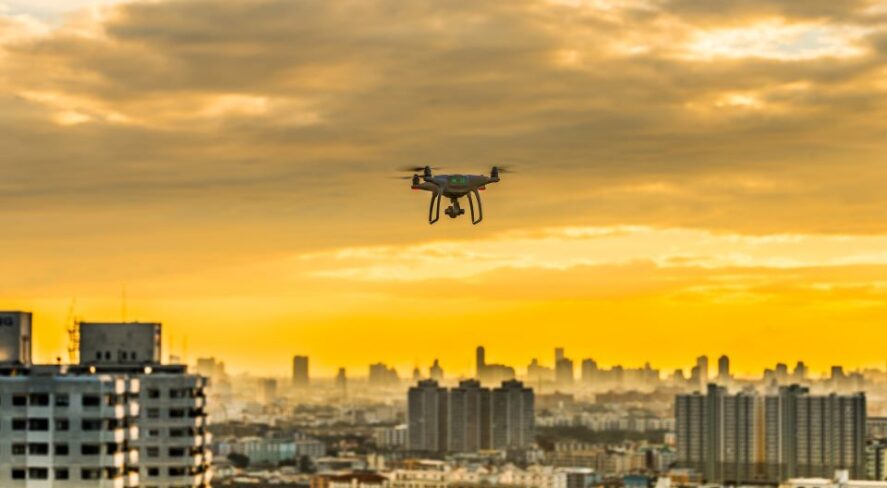Protecting Mass Gathering Venues Against Drone Threats: How SIA and the Industry Are Leading the Way

Bill Edwards and Cory Peterson discuss how SIA and our members are working to advance UAS-specific authorities and regulations within the United States Code.
It’s Time to Protect the Public

The weaponization of uncrewed aerial systems (UAS), commonly referred to as drones, poses a significant threat to public safety and, specifically, those venues that host mass gatherings. As a stage setter, it is important to set conditions for counter-uncrewed aerial systems (C-UAS) authorities to go beyond federal jurisdiction that simply addresses critical infrastructure, U.S. Department of Defense and Special Event Assessment Rating (SEAR) 1-5 events. In 2022, unofficially there were over 1,200 requests for SEAR designation, not all of which were approved – this indicates both awareness and need. More importantly, it exhibits that C-UAS is “top of mind” for security professionals. Establishing exemptions for local and state police from specific provisions within 18 United States Code (U.S.C.) 32 – which governs criminal acts involving aircraft, including the act of downing a drone – is a necessary step to the delegation of authorities in this operating environment.

The increasing prevalence of weaponized UAS presents a complex challenge to public safety. One way to approach this problem is to explore the need for exemptions for local and state police from certain provisions within 18 U.S.C. 32, focusing on the act of mitigating the risk associated with a drone, and highlighting the crucial role the Security Industry Association’s (SIA’s) Counter-UAS Working Group plays in advancing C-UAS-specific regulations within all affected U.S. Code.
Understanding the threat is one of the most important steps law enforcement professionals and large-venue business owners can take as it pertains to this technology. The Russia-Ukraine war is ripe with tutorials on weaponized UAS that are easily accessible through Google or YouTube.
Weaponized UAS introduces new dimensions to criminal activities and acts of terrorism. Their potential use in targeted attacks, surveillance and the delivery of hazardous materials poses significant risks to public safety. It is imperative to enable law enforcement agencies to respond effectively to mitigate these evolving threats.
It’s important to balance public safety and legal restrictions, specifically, provisions within 18 U.S.C. 32 which address the act of downing a drone and encompass physical and electronic interference. While these provisions aim to protect the integrity of UAS operations, they unintentionally hinder law enforcement efforts to neutralize weaponized drones that pose immediate threats. Exempting trained and certified local and state police from these provisions allows for a balanced approach, enabling appropriate measures to mitigate the risks posed by weaponized UAS. To highlight the inadequacy of existing laws, not only is it illegal for state, local, tribal and territorial agencies to down a UAS, but the various rules also governing interception of drone signals in 18 U.S.C. 3121-3127, 18 U.S.C. 2520 and 18 U.S.C. 2510 (among others) make the entire situation too confusing for a bulletproof defense of any C-UAS activities.
How SIA’s Counter-UAS Working Group Is Leading the Way
SIA’s Counter-UAS Working Group – an expert-led group and key representative of the security industry – plays a crucial role in advocating for C-UAS-specific regulations within the lack of authorities below the federal level of government and special circumstances. This group’s expertise and industry insights provide valuable guidance in shaping comprehensive regulations that address the unique challenges posed by weaponized UAS.
Advocacy and Legislative Influence
SIA’s Counter-UAS Working Group serves as a powerful advocate, raising awareness about the implications of weaponized UAS and the need for targeted regulations and support from legislators who understand and view the technology from the current operating capabilities. Through their industry connections and influence, group members actively engage with policymakers, lawmakers and relevant government agencies to advocate for changes in authorities and hope to begin the discussion to shape U.S. Code for the continued evolution of drone technology in the “aerial domain.”
By granting thoughtful exemptions from the current U.S. Code and engaging the expertise of the SIA C-UAS Working Group, a regulatory framework that effectively addresses the challenges posed by weaponized UAS while ensuring public safety can be developed. SIA’s working group is currently focused on three main legislative objectives:
- The ability to designate select areas for testing, demonstration and research and development of detection and mitigation equipment (approved ranges)
- Sanctioned and delegated authority to train and certify C-UAS operators (open to private-sector competition)
- Expansion/delegation of “authorities” for advanced detection and C-UAS capabilities for security and law enforcement professionals (to include private-sector businesses that host the public)
Collaborative Efforts and Multistakeholder Involvement
Collaboration among the SIA Counter-UAS Working Group, law enforcement agencies, industry stakeholders and government bodies is essential. By working together, we can address concerns, identify potential risks and develop comprehensive UAS regulations within U.S.C. Title 49 that balance public safety, privacy considerations and responsible UAS usage.
The urgency to address the need for exemptions and UAS-specific regulations within U.S. Code is evident. Once a threat has been acknowledged, even if emergency authorizations were granted, law enforcement agencies currently lack the necessary tools and specialized training to effectively neutralize weaponized UAS. Without prompt action to equip and empower law enforcement, communities and significant mass gatherings remain vulnerable to potential harm. We must seize the opportunity to act swiftly, ensuring that law enforcement agencies have the resources and regulatory framework in place to respond effectively to these emerging threats, safeguarding public safety without compromising the integrity of UAS operations.
Conclusion
Exempting trained and certified local/state and large public venue security professionals from specific provisions within 18 U.S.C. 32 and engaging the SIA C-UAS Working Group are crucial steps toward ensuring public safety in the face of weaponized UAS threats. By working collaboratively and advocating for UAS-specific authorities and agile changes to regulations within the U.S. code, we can create a regulatory framework that effectively addresses these challenges while enabling responsible UAS usage and safeguarding our communities. Most recently, the U.S. Senate has introduced legislation, S.B. 1631, highlighting the need for modifications to the law; however, in the authors’ opinion, the authorities do not go far enough to adequately protect mass gatherings from this emerging threat.
